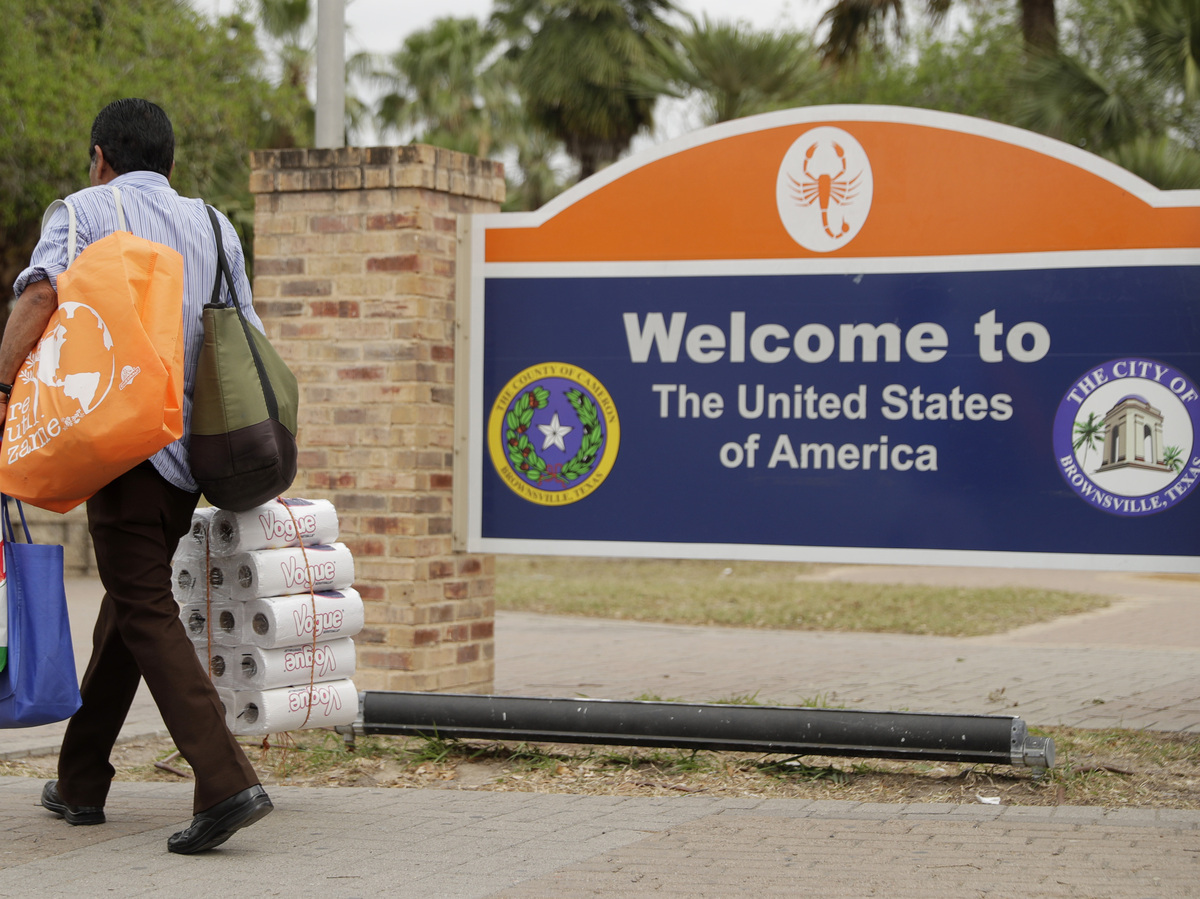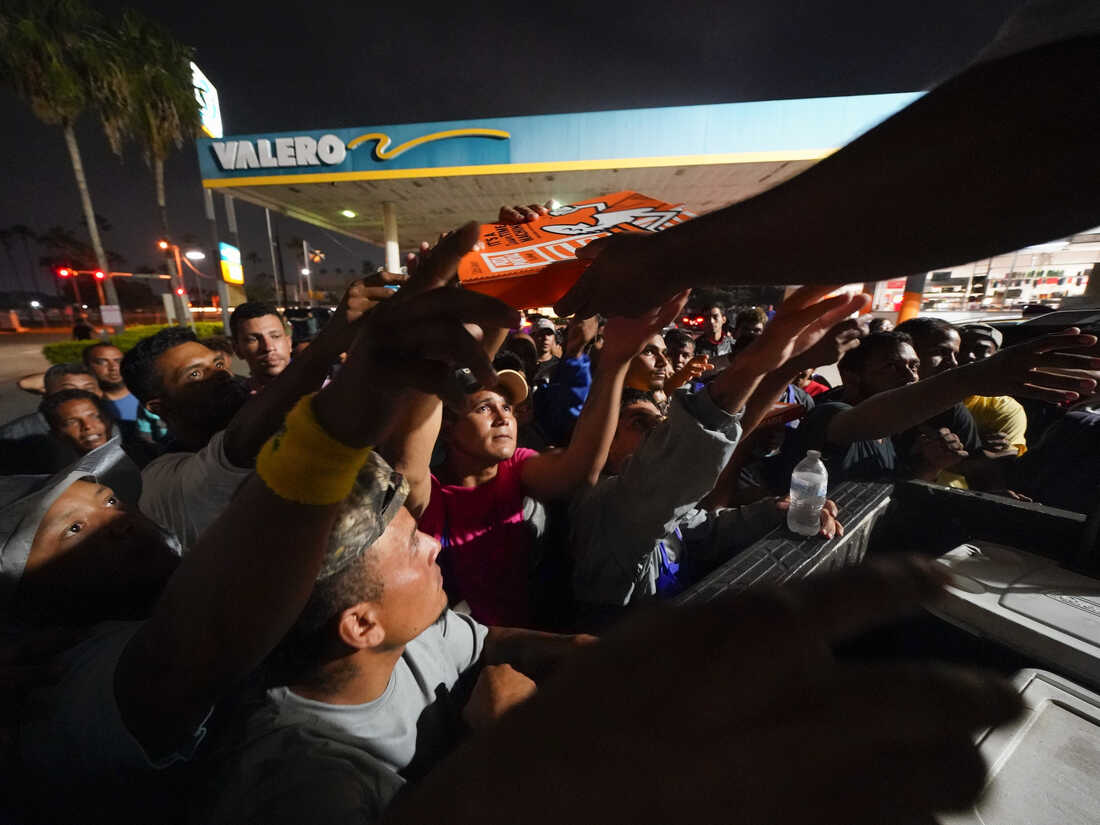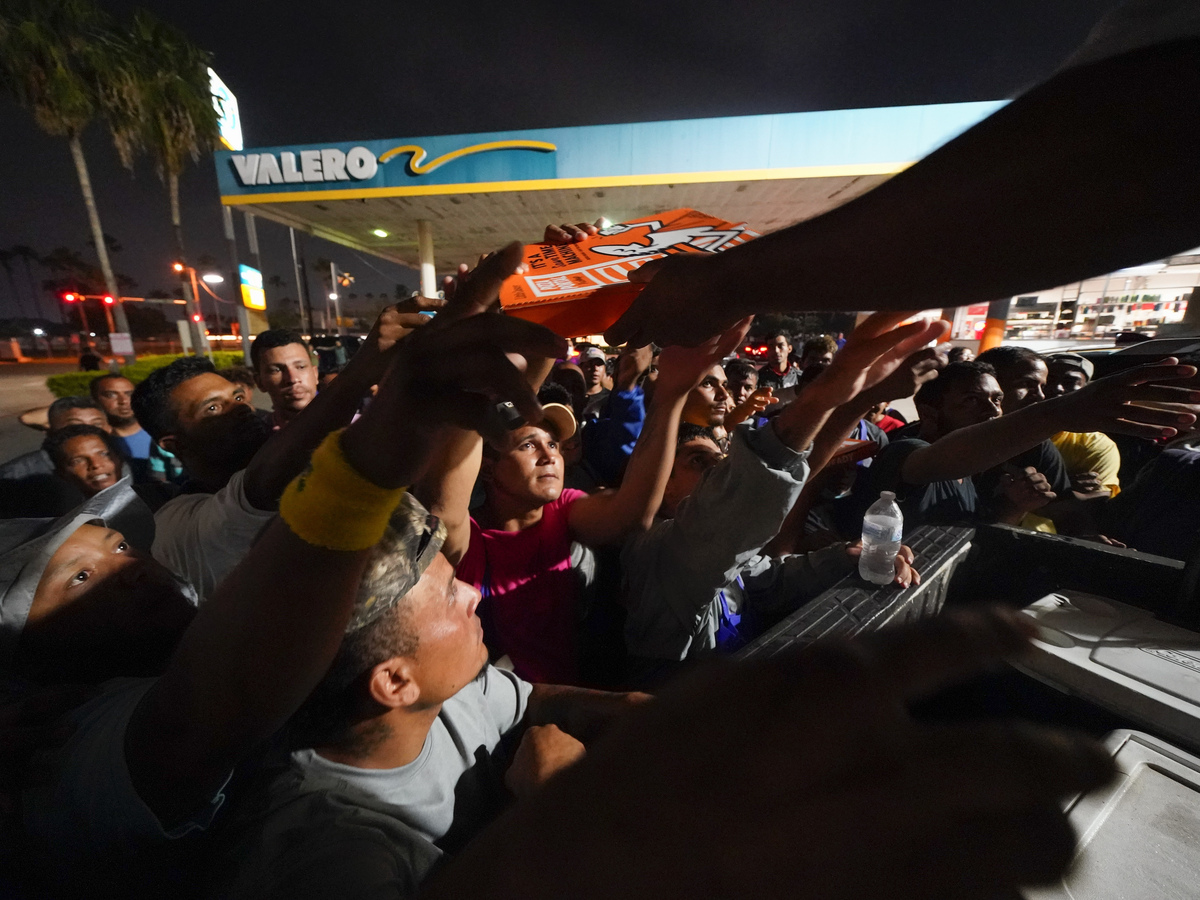Migrants wait at the Gateway International port of entry under U.S. Customs and Border Protection custody in Brownsville, Texas, on May 5, before being sent back to Mexico under then-active Title 42 restrictions.
Veronica G. Cardenas/AP
hide caption
toggle caption
Veronica G. Cardenas/AP


Migrants wait at the Gateway International port of entry under U.S. Customs and Border Protection custody in Brownsville, Texas, on May 5, before being sent back to Mexico under then-active Title 42 restrictions.
Veronica G. Cardenas/AP
When a Trump-era immigration policy — known as Title 42 — expired last week, there were expectations that it would lead to an increase in the number of people coming into the U.S. through many of the country’s southern border towns.
In the past several days, though, that has not been a reality. In fact, there has been an overall decrease in border crossings so far.
Rudy Flores works in downtown Brownsville, one of the southernmost cities in the United States. It sits right on the border between Texas and Mexico. Often border towns get media attention when something happens with U.S. immigration policy. He says a lot of what he hears in the media often does not match his experience.
“They are making it seem worse than it is,” Flores said. “It’s just calm. They are just trying to get somewhere.”
In general, an increase in attention from media and policymakers during national debates over immigration policy causes some resentment among people who actually live along the U.S.-Mexico border. Flores says this time is no different.
“For me, nothing has changed even though I work downtown,” he said. “Just a little bit more traffic — foot traffic. But other than that, it’s normal to me.”


A pedestrian carries supplies as he enters Texas after crossing over from Mexico at the Gateway International Bridge on March 20, 2020, in Brownsville.
Eric Gay/AP
hide caption
toggle caption
Eric Gay/AP


A pedestrian carries supplies as he enters Texas after crossing over from Mexico at the Gateway International Bridge on March 20, 2020, in Brownsville.
Eric Gay/AP
Brenda Gomez was born and raised in Brownsville and loves living there. She says that because it’s on the border, the city is a mix of Mexican and American cultures.
“I grew up in Mexican culture,” she says. “So I am at home. Every time I travel outside of the valley, I like it, but it just feels like home whenever you come back here. So, I like the culture. I like the people.”
Gomez says crossing back and forth between Mexico and the U.S. is also part of life here.
“I travel to Mexico a lot,” she says. “So every time I go into Mexico and then I come back and I see people wanting to cross over or just being held there for so long. It has its pros and its cons.”
On the one hand, Gomez says she’s OK with people coming to the U.S. in search of a better life. But, she says, people already living in these border towns need help too.
Dani Marrero Hi is the communications director for a local organization called LUPE, which is a generations-old community organizing group that works in the Rio Grande Valley. Marrero Hi uses they/she pronouns.
They say immigration often becomes a focus for policymakers, but people and voters whom their group talks to in the valley have a wide range of basic needs.
“Immigration is something that is important to the families that are already here and the families that are arriving,” they explained, about the concerns facing families in Brownsville. “But what we hear most is, for example, access to good-paying jobs, our infrastructure.”
They said recent thunderstorms, which were relatively mild, caused school closures and widespread flooding due to poor drainage in border communities. Marrero Hi says basic public resources such as roads, water and electricity are top of mind — and immigration is just another issue in the mix.
“Being in border towns, this is just part of life,” they said. “That’s in our DNA. We all have immigration stories. I think where we get dismayed is when we hear the state or national conversation or the way [Texas] Gov. [Greg] Abbott — or at times even President Biden — talks about the border. It just doesn’t ever feel like they are talking to us.”


Migrants receive pizza from volunteers after being released from a respite center at the Texas-Mexico border on May 11 in Brownsville.
Julio Cortez/AP
hide caption
toggle caption
Julio Cortez/AP


Migrants receive pizza from volunteers after being released from a respite center at the Texas-Mexico border on May 11 in Brownsville.
Julio Cortez/AP
Marrero Hi says it is not surprising that the end of Title 42 resulted in a focus on border communities, but they say the way these communities are portrayed is often misleading.
“It’s not at all the picture that I think people want to portray — or those dehumanizing terms like ‘waves’ or ‘surges’ of people,” Marrero Hi said. “It’s much more like families and individuals among the most vulnerable in the world trying to find shoelaces, deodorant and a way to reunite with their families here.”
Every time there is this media attention, though, Marrero Hi says they hope it creates an opportunity for policymakers to improve the situation on the border for people already living here, as well as the families and individuals who just arrived.
This story originally appeared on NPR



